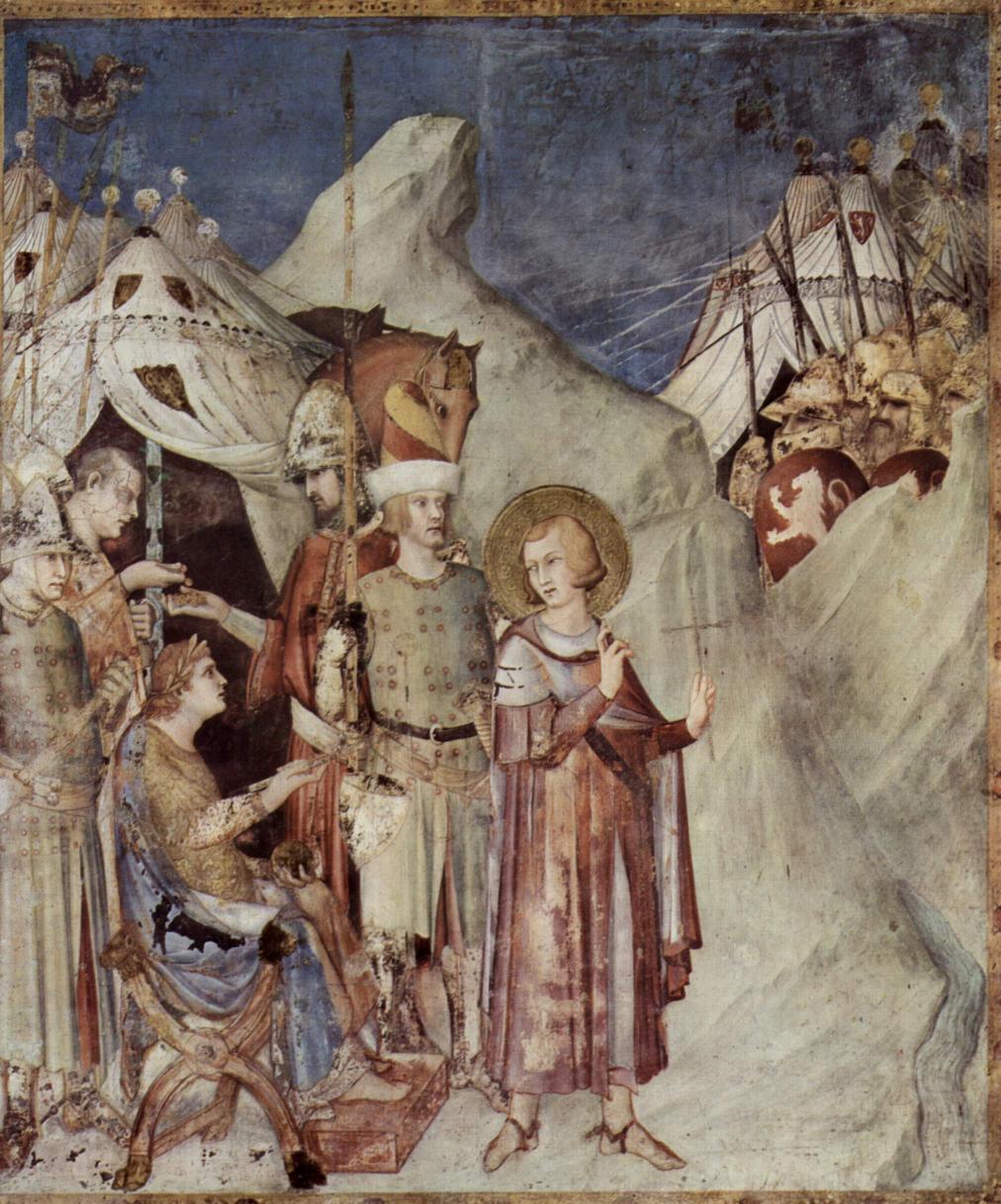|
|
St. Martin Renounces His Weapons by Simone Martini, 1322-26
Fresco, 265 x 230 cm
Cappella di San Martino, Lower Church, San Francesco, Assisi
Source: The Yorck Project: 10.000 Meisterwerke der Malerei.
Note the details of the coat of plates worn under the surcoat.
Referenced on p220, Arms and Armour of the Crusading Era, 1050-1350, Western Europe and the Crusader States by David Nicolle.
653A-D 'St Martin renouncing the sword', wall-painting by Simone Martini, Umbria, c.1317
(in situ Montefiore Chapel, Lower Church of St Francis, Assisi, Italy)
A - German; B-D - Romans. It is interesting to note that it is the German or 'barbarian' warrior rather than the Italianate Romans who has been given the rigid neckguard (A).
Such a neck piece is so often given to 'barbarian', 'wicked' or 'infidel' warriors in 14th century Italian art that one may assume that it was generally associated with aliens or foreigners.
This piece of armour is in some respects similar to the raised neck defences seen in late Byzantine and Balkan art, where it is generally given to warrior saints.
This coincidence seems to suggest that rigid or semi-rigid neck defences were indeed characteristic of the 14th century Balkans.
The German also has a wide-brimmed chapel-de-fer or early cabacete.
The Romans have slightly different but equally wide-brimmed helmets (B), while one man has a simple pointed helmet hanging from his belt by its chin-strap (D).
He and another warrior meanwhile wear fashionably tall hats rather than helmets (C and D). The most obvious armour of these Romans is a coat-of-plates (B and D).
This particular form, however, has a long hem hanging below the knees.
Both men wear greaves, but whereas one has riveted cloth-covered sabatons (B) the other has laminated sabatons (B).
This latter figure also carries a lance with a roundel ahead of the grip.
|

